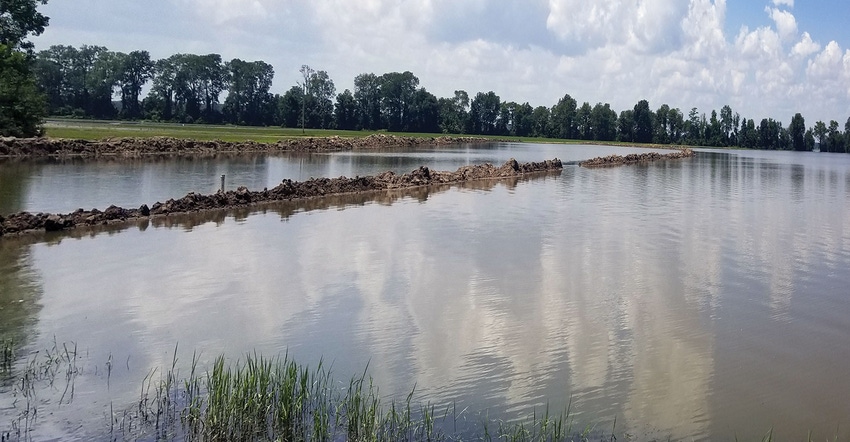
By the first week in July, thousands of Mississippi River bottomland fields remained under water, leaving farmers with limited or no options to plant row crops.
“By July 4, row crops options are very limited,” said Curt McDaniel, NRCS, assistant state conservationist for field operations in west Tennessee.
“I think it’s safe to say that by July 4, every acre that could be planted is planted, and every acre that can’t be planted is still under water,” McDaniel said. “Now, we just hope that Mother Nature will let these rivers get back to normal so we can see what needs to be done.”
Help is available, he added. USDA announced a special assistance program for 2019 on prevented planting acres and a program signup for EQIP funding for disaster-related damage. These programs are designed to help farms across the nation cope with massive rainfall and flooding damage, including inability to plant by final planting dates or on fields with significant planting delays.
Some options include:
Earlier haying or grazing cover crops planted on prevented plant acreage. Producers may begin grazing or harvesting hay, haylage, silage or baleage as early as Sept. 1, instead of Nov. 1, just for 2019.
To be eligible for prevented plant payments, producers must follow cover crop termination guidelines (see RMA’s Cover Crop webpage.) Producers can hay, graze, or chop a cover crop planted with NRCS assistance and be eligible for a prevented planting payment.
Producers do not need NRCS to review or approve cover crop selections to be eligible for prevent planting payments.
Find more prevented planting program information on a frequently asked questions page or a June 20, 2019 news release.
The NRCS Environmental Quality Incentive Program (EQIP) may help producers cover part of the cost for practices that mitigate the impacts of flooding and excessive rain,including certain vegetative and structural practices to repair erosion caused by excessive rain.
While farmers can apply for the program anytime, these special sign-ups are geared for farmers affected by excessive rain and flooding to implement practices quickly. Producers should contact the local NRCS office to learn about the disaster EQIP signup by July 31.
McDaniel says not just NRCS, “but all of USDA will be working to help producers identify eligible acres and available resources.
“We hope we can get in after the water recedes and determine what needs to be done.”
In some cases, McDaniel said, producers may want to plant cover crops to protect fields until they can get a fall wheat crop planted or until they can plant the 2020 crops.
“We want to balance good soil conservation with sound production as best we can,” he said.
McDaniel said an accurate assessment of acreage affected in west Tennessee remains to be tallied. “I just don’t have a good handle on the number of acres yet,” he said. “Most of the fields under water are in the Mississippi River bottom. Some tributaries also flooded fields, but the Mississippi bottomland is the most affected.” Most of the prevented planting acres are in the counties with those river bottoms, he said.
“When the rivers get back to normal levels will be a good pivot point for NRCS,” McDaniel said. “Then we can identify prevented planting acreage and assess what we can do to mitigate the damage.”
First step, he added, will be to check with local USDA offices for assistance and guidance.
About the Author(s)
You May Also Like






